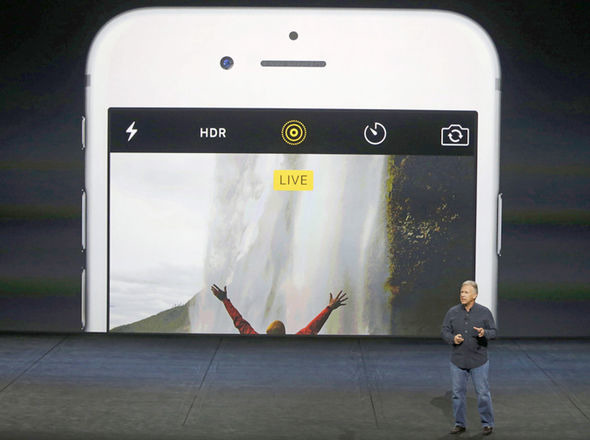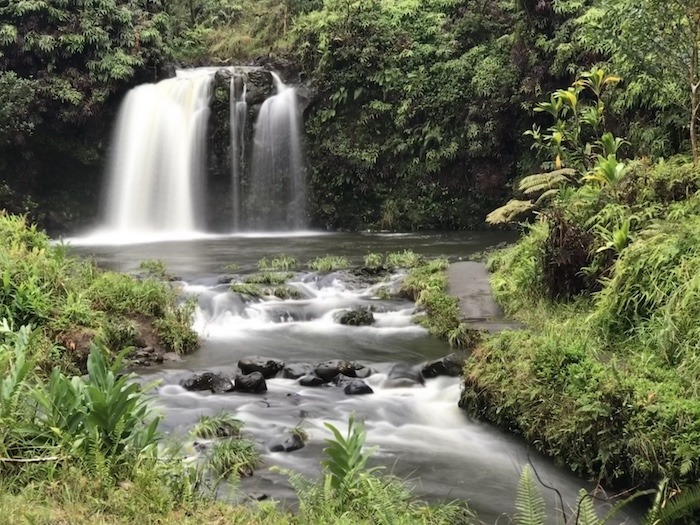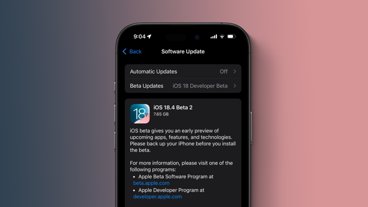The way that technology can touch us personally is captured in a thank you letter an iPhone user sent to Apple, noting appreciation for Live Photo's capture of ambient sound and video of a loved one who had passed away. Apple's chief executive Tim Cook responded with a note of condolences and appreciation for sharing the story, stating "it is deeply inspiring for us."
Finding treasure in a Live Photo
The story, posted to the iPhone Reddit, describes a man's experience in "fighting depression for a few months" after his 87 year old grandmother passed away.
"I lived with her and my mom for 25 years and she was an inspiration for both of us. She was Italian and had to hide on the mountains during WW2, during which she managed to come to Brazil where she got married.
"Since December we knew she was short on time so me, my fiance, my sisters and my mom did everything on our reach so she could get comfortable and enjoy her days. We got the family reunited every weekend, we cooked everything she liked, took a lot of photos of all of us and tried our best to show her how much we loved and cared for her."It was the first time I truly smiled in this 2 months when I heard her laughing on this Live Photo"
"Unfortunately, she passed away 10 days after my birthday, tomorrow will be exactly 2 months, on her home, surrounded by her children. Since that happened, I lost most of my strengths, didn't want to get out of bed, stood on her old bedroom a lot and started taking anti depressives.
"Last week my sister went home and we started sharing photos we had of her and I got a few I didn't had. I never have my phone volume on, but this day it was and as they all have iPhones, I 3D-Touched the photo to see the Live Photo and that's when it hit me that the Live Photos have sounds.
"I guess it was the first time I truly smiled in this 2 months when I heard her laughing on this Live Photo. She was so happy and enjoying that day that I couldn't stop watching this short video and the others where she was talking."
A simple, automatic technology creating a deeply moving expression
The man sent his experience to Cook in an email, "thanking him for the sound that is recorded on the Live Photo and explaining how much it meant to me and that it helped me a lot."
In response, Cook responded, "Vinicius, I'm so sorry for the loss of your Grandma. Thanks for sharing your story— it is deeply inspiring for us. - Tim"
Apple introduced Live Photo with iPhone 6s in iOS 9, as a feature for showing off the new phone's capability to respond to 3D Touch. The feature records a brief video clip (with audio) of a few seconds before and after the photo was captured, enabling users to see some context for each photo taken. The feature is on by default.
With a deep press, the entire video clip is played, animating smiling faces and waving hands in portraits, or capturing the movement of boats on a lake, pets playing in the park or other action. You can turn Live Photo off, but by having it on all the time you can capture moments you would otherwise miss. The extra data required to capture a few seconds of video is not very excessive (it appears to roughly double the size of the photo).
Since its release, Apple has enhanced the Live Photo feature with the ability to edit the keyframe used as the main photo, along with settings in iOS 11 to present the video portion as a Loop, Bounce or as motion-blurred action in a Long Exposure (useful for portraying waterfalls, rushing traffic, fireworks, etc).
Users can also now edit a Live Photo (crop, filter, adjust light levels) and the changes will be applied to the entire clip. Note that using third party image editor may drop the audio and video portion when you make edits to a Live Photo, so you should edit a duplicate image if the editor does not support Live Photo and you want to keep the animated portion.
Apple has also added support for viewing Live Photos on Macs, in Photos and for use as an animated wallpaper for use on Apple Watch or the lock screen of iOS devices.
Live Photo largely confined to Apple platforms
While Apple has made the format open to developers, it's not broadly supported across many sharing platforms. You can send a Live Photo via Messages, but when you email a Live Photo (or share it via AirDrop), it turns into a standard image.
Twitter offers no support for Live Photos. Instagram added support to share Live Photos to a short-term disappearing Story, but users still can't directly upload Live Photos into their permanent shared feed as a video clip, looped or not (although Instagram does support the selected key image or a Long Exposure, both of which are handled by iOS).
Facebook (which owns Instagram) does allow users to upload a Live Photo (although other platforms such as Android devices that don't support the format can't animate it). Google added support for Live Photo in Google Photos, although again it is only viewable by iOS devices. Oddly enough, even Apple's own Clips app doesn't support Live Photos. And wireless transfers via AirDrop strip the video portion without really saving any space
In order to move Live Photos to social networks that don't natively support the format, the Live Photo must be converted in some fashion (oddly enough, even Apple's own Clips app doesn't support Live Photos. And wireless transfers via AirDrop strip the video portion without really saving any space: a 3.5MB Live Photo I shared from iPhone X to a new MacBook Pro via AirDrop was converted into a static 3.2MB JPG).
A variety of App Store utilities offer to convert Live Photo into a standard video file or GIF animation. These exported clips no longer work as a "magic" photo that animates on a touch, but does allow you to share the action captured in a Live Photo to a platform such as Twitter, Instagram or Clips.
Note that the GIF format (which dates back into the early 80s) only supports 256 colors and does not support audio, so converting a Live Photo into a GIF can lose a lot in the transition. There is also limited support for GIF on Apple's platforms, and GIF image sequences may take a strangely long time to begin animating. Exported videos may be larger than a GIF, but lose a lot less of what was captured in a Live Photo.
Google also introduced its own novel iOS app Motion Stills, which not only turns a Live Photo into a video clip, but also adds motion stabilization that can turn a jerky video clip into a smoothly animated sequence or loop. It can even convert a series of Live Photos into a single video sequence. It may also crop the image area or cut off video from the beginning or end of a Live Photo to help stabilize it.
Motion Still clip created from two Live Images, compressed a little further by Instagram
On the other hand, last year Apple released a JavaScript API for Live Photos that enables embedding the file format into web pages. The website only needs to add the LivePhotosKit JS to the webpage and enable JavaScript strict mode. The Live Photo is passed to the browser as a single JPG and a MOV file.
The kit is compatible with Safari, Chrome and Firefox browsers on macOS and Chrome, Firefox, Edge and Internet Explorer 11 on Windows, and on mobile devices in iOS for Safari or Chrome and on Android in Chrome.
Live Photo vs. Video, Burst, Portrait capture
When you are intentionally seeking to capture video, it makes more sense to record as a video because you can then control the duration of your video, you capture at a much higher quality, the video is more broadly and easily shareable and you can make use of other iOS capture modes such as Time-Lapse or Slo-Mo.
Live Photo is great for catching contextual animation when shooting casual photos, but it only works if you have it on by default (there's no way to "recover" a Live Photo that was never recorded to begin with). Live Photo works with both standard and zoom lens settings, and with front and rear cameras.
Additionally, Live Photo only works when you take a standard photo— it is disabled when you capture a Burst of images, or when using Portrait Mode (where the camera is busy capturing a series of images or depth data). Live Photo now works like a limited Burst, allowing you to review a shot and select the best frame of the sequence to use, a handy "automatic" feature when taking group photos where you're trying to get a shot of everyone smiling with their eyes open.
By simply leaving Live Photos on, you not only get smooth animations when swiping through your photos and the ability to create loops and long exposure images, but you also automatically capture emotive moments you may likely cherish in the future as animated memories of a specific time, place and the people (and pets) you care about.
 Daniel Eran Dilger
Daniel Eran Dilger









-m.jpg)






 Brian Patterson
Brian Patterson
 Charles Martin
Charles Martin


 Malcolm Owen
Malcolm Owen
 William Gallagher
William Gallagher
 Christine McKee
Christine McKee
 Marko Zivkovic
Marko Zivkovic







12 Comments
I went home for Christmas last year and took a photo of the tree (iPhone 7+). I didn't realise it had taken a live photo at the time, but when I got home and was sorting through my photos, the tree had a few seconds of twinkling lights which I thought was delightful. Not saying this compares with the person who found an immortalised moment of their grandparent but it made me smile.
Just to clarify, that reddit post was posted in the "Apple Subreddit", not the "iPhone Reddit" which makes no sense.
I don't think that's true regarding AirDrop. I took a photo while parasailing this week and used AirDrop to pass to a friend. I'm quite positive he held his finger on the photo and it showed the short clip. Is there something different that I'm missing?
Thank you for writing this article Daniel. To me, this is one of the best articles you have written in awhile.
Anybody that has had a loved one pass away can appreciate preserving the memories they have. This is a perfect example of why Apple makes their products.